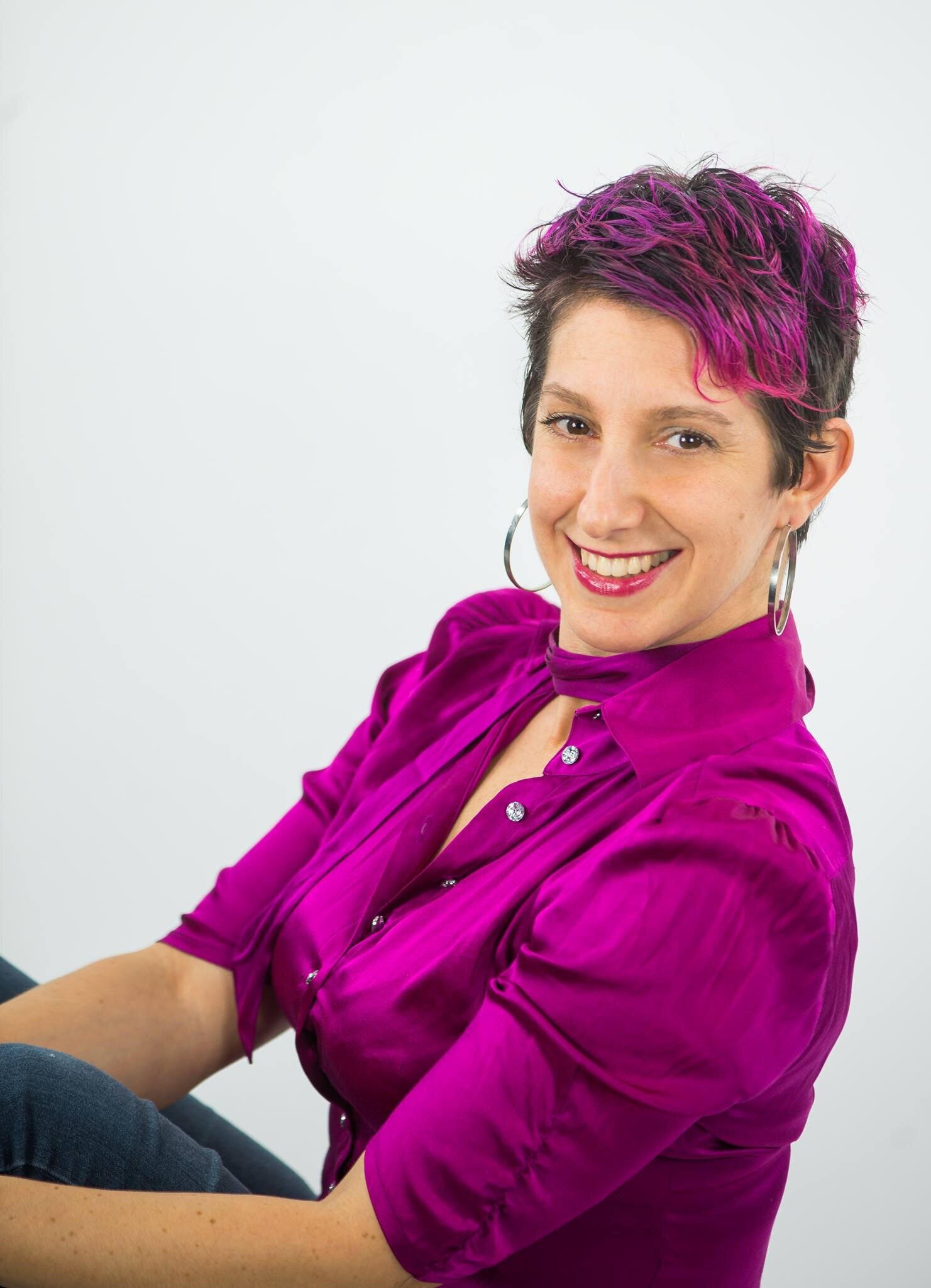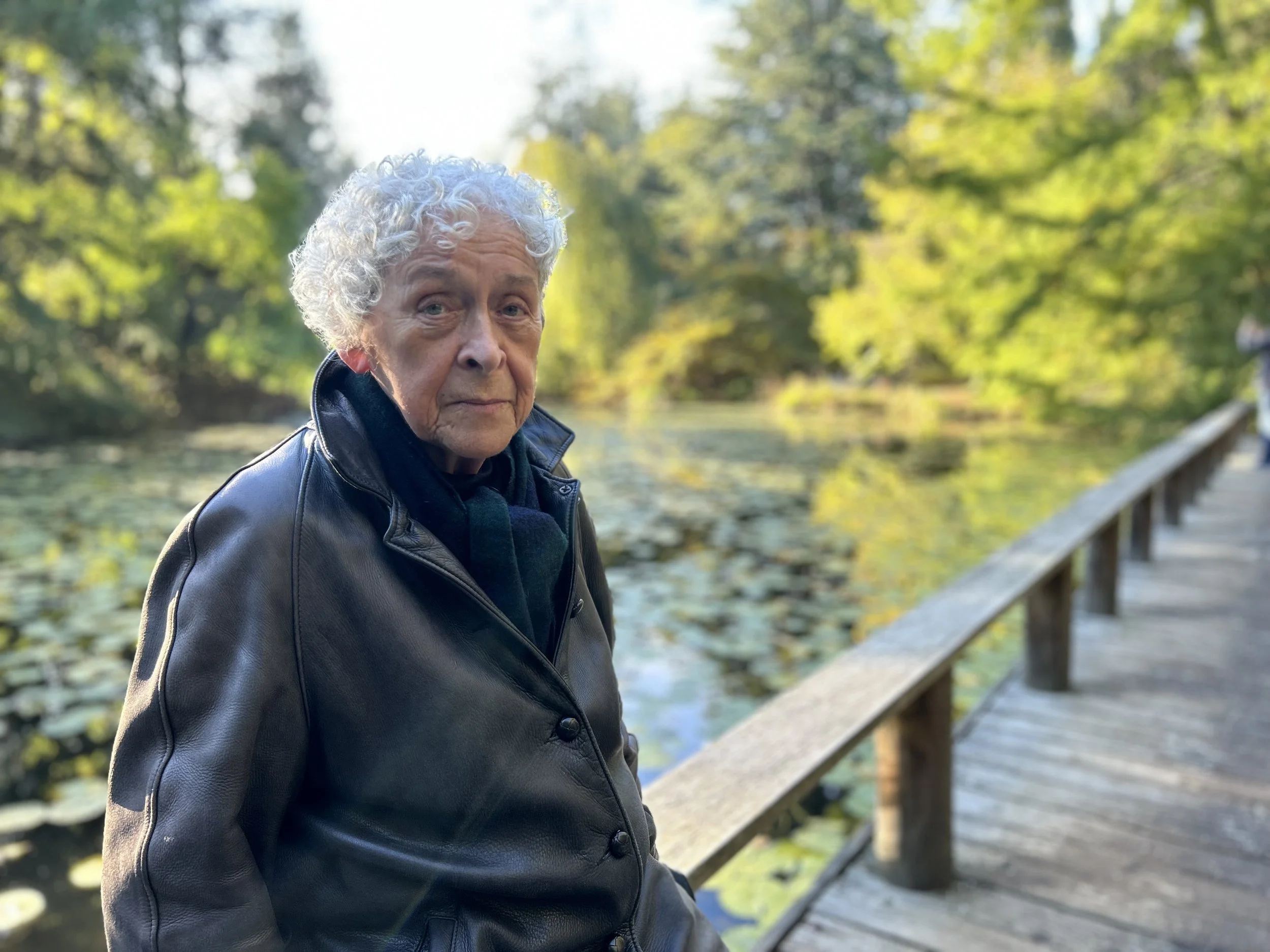Myriam Steinberg's graphic-novel memoir confronts pain of infertility, at JCC Jewish Book Festival
Catalogue Baby chronicles five years of struggle, from grief and despair to rage and levity
Myriam Steinberg recounts her five-year struggle to become a single mother by choice. Photo by Diane Smithers
A page from Catalogue Baby: A Memoir of (In)fertility, illustrated by Christache.
The Cherie Smith JCC Jewish Book Festival presents Myriam Steinberg in its Creativity Runs in the Family online event on February 24 at 8 pm
FROM ART SPIEGELMAN’S Maus to Gord Downie and Jeff Lemire’s Secret Path, the graphic novel has been proven time and again to be a powerful artform for relating difficult, sometimes harrowing, stories. But even given the genre’s rich history, there is something utterly new about Vancouver author Myriam Steinberg’s Catalogue Baby: A Memoir of (In)fertility (Page Two).
Steinberg’s literary debut, illustrated by local artist Christache, is at once a personal account of one woman’s five-year struggle to become a single mother by choice and a bold confrontation of the taboos surrounding female infertility. It treads into territory most often kept in the shadows: female loneliness, miscarriage, egg and sperm donation, pregnancy termination—and all the difficult emotions, from rage and resentment to grief and despair, that lie therein. All the while, the book weaves in moments of levity and humour, and is threaded throughout with gratitude for the healing power of friendship, family, and community.
“I think for a lot of people, it's a really private subject, and it's also surrounded by a lot of silence and taboo,” Steinberg acknowledges in a Zoom chat from her East Vancouver home. “How do you speak about infant death, and how do you speak about this really intense, personal loss with compassion for yourself and without being judged for your decisions and for what happened to your body? There's a lot of fear around it.”
The founder and artistic director of Vancouver’s In the House Festival, which ran for 11 years, will be launching Catalogue Baby in a virtual Jewish Book Festival event February 24, moderated by Lani Brunn, who appears in the book as the central figure in Steinberg’s support network.
As Steinberg explains, the idea of shaping her experiences for the page began when she began sharing what she was going through on social media.
Single, in her early 40s, and having always wanted to be a parent, she had decided to embark on a journey to motherhood alone.
“When I started sharing my story on Facebook, I started getting messages from a lot of women from all walks of life thanking me for sharing my story. Things like, ‘I had a miscarriage as well, and I didn't tell anybody,’” she explains. “I didn't have a partner with whom to share stuff, so I got friends to photograph and videotape everything. I had no idea what I was going to do with all the images. At first, it was more about posterity—having these intimate moments that I can look back on and, and enjoy, and maybe share with my kids one day.”
With the overwhelming response on social media, she began to think about how she might use all the material she had collected to spark a wider discussion. She considered creating a theatre piece, but felt she wanted something more tangible. And while the idea of writing a traditional book was tempting, “there was so much stuff, so many emotions and circumstances that are just too intense or visceral to put into words,” she explains.
Despite having little experience of graphic novels—either as a writer or a reader—she began to gravitate toward the form’s use of imagery to tell stories. “I went to the library and just took out dozens and dozens of graphic novels. And once I had determined what genre I liked, I started thinking about, How do I translate moments? How do I write about it? How do I do the mixture of drawings and writing? How does that author translate their thoughts into the imagery?”
Scenes from Catalogue Baby, illustrated by Christache.
Steinberg began storyboarding her book—at first documenting the past, and then documenting the present as she lived through it. “I actually had a miscarriage as I was writing,” she shares. “There were certain scenes where I'd go in for [an embryo] transfer or whatever, and I’d feel like it [what I was writing about] was going to jinx the transfer.”
Without planning for it, Catalogue Baby seems to have hit a zeitgeist, as it comes on the heels of major celebrity disclosures of miscarriage and infant loss—including model and cookbook author Chrissy Teigen’s Instagram posts documenting the stillbirth of her son with musician John Legend last October, and the Duchess of Sussex Meghan Markle’s November 2020 New York Times essay about the miscarriage she experienced last July. But while Steinberg acknowledges that Teigen and Markle have helped move the topic into the open, she says more still needs to be done to hear the voices of those less privileged.
“It's great that these people who have wide followings are speaking out about it because that at least starts to open the door,” she notes, “but on the other hand, I find it really difficult because it's like these famous people are the only people who are allowed the platform to speak their experience. For the so-called everyday person, it’s really, really difficult to get their voice heard. I feel like there needs to be a higher emphasis on reaching out to people who are not mega stars.”
While Catalogue Baby ends on an ultimately uplifting note (at the risk of giving too much away, Steinberg is now the mother of two-year-old twins), the book is unflinching in its portrayal of multiple rounds of insemination, intra-uterine injection, in-vitro fertilization, and four lost pregnancies—three by miscarriage, and one by termination after the discovery of genetic abnormalities. It’s raw stuff, but anyone who has experienced the grief of losing a wanted pregnancy or supported someone through the experience will recognize something of their own story in Steinberg’s—which is precisely the point.
“I see a wide audience for the book,” says Steinberg. “Obviously there are all the people who are trying to get pregnant or who have lived through loss, but there’s also their support networks: their partners, their friends, or their coworkers who can start getting an inkling of what these people are going through. I think it's really important for people who just don't understand to learn that what people going through loss and infertility need is compassion and understanding.”

















